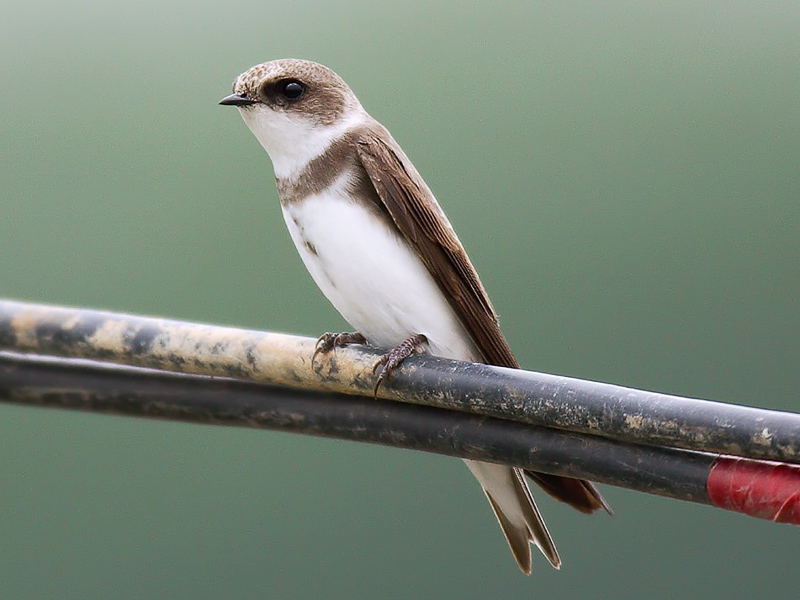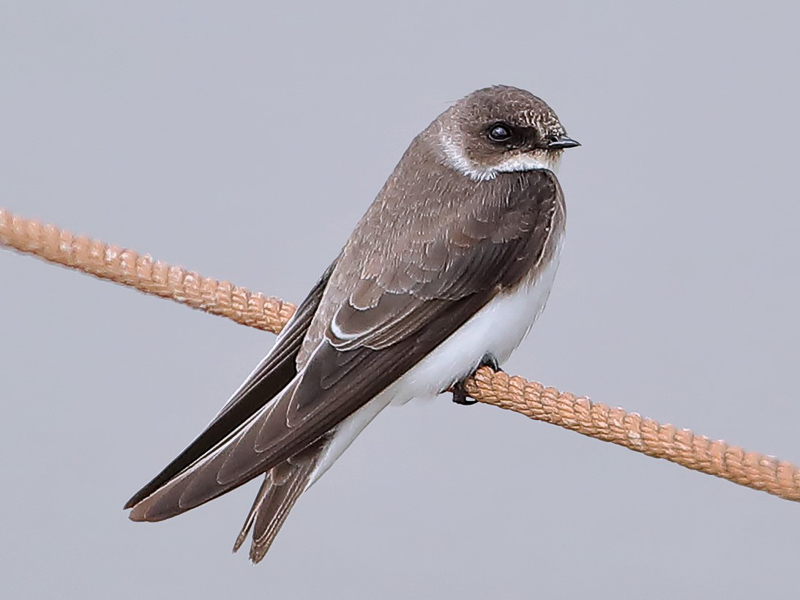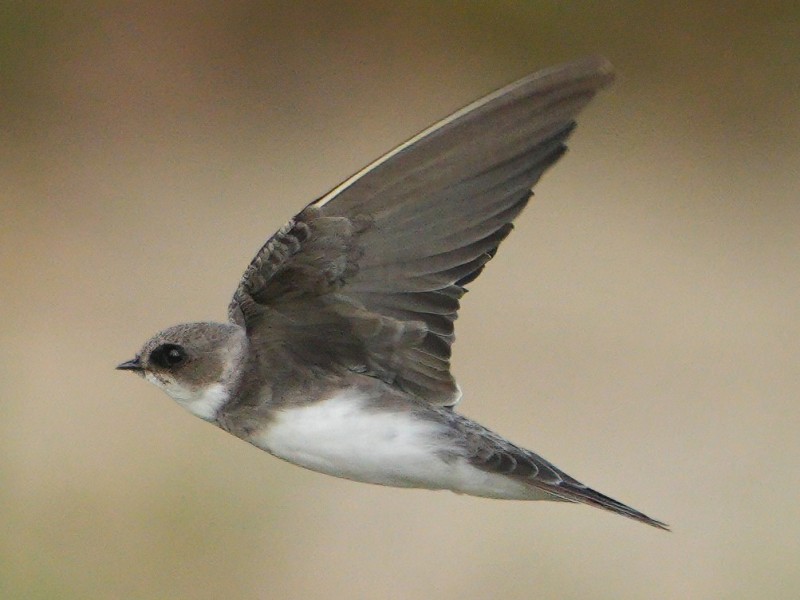Sand Martin Riparia riparia 崖沙燕
Category I. Uncommon passage migrant and scarce winter visitor to wetland areas; occasionally high weather-induced abundances occur.
IDENTIFICATION

Oct. 2024, Paul Leader.
12 cm. Smaller and more compact than Barn Swallow with a different flight action and profile: wings are beaten more hurriedly with little gliding and, when accelerating, they are held close to body. Tail fork relatively shallow.

Apr. 2007, Michelle and Peter Wong.
The underparts are off-white to white with a dark breast band, and the underwings dark.

Oct. 2021, Michelle and Peter Wong. Juvenile.
Juveniles such as this bird have paler fringes to the grey-brown upperpart feathers, only clearly visible at close range.

Oct. 2024, Paul Leader.
The uniformly brown underwings and chest band contrast with a pale collar and whitish underparts.
VOCALISATIONS
The typical flight call is a rather dry and tuneless rasping rattle.
DISTRIBUTION & HABITAT PREFERENCE
This species is mostly reported over fish ponds, but also over other lowland areas in the New Territories. Most reports are from the Deep Bay area and hinterland, though it has also been recorded in widespread areas of the New Territories and Lantau.
OCCURRENCE
Sand Martin is a passage migrant in spring and autumn (Figure 1). In spring Sand Martins are mainly reported from the last week of March to the middle of May; the latest in spring occurred on 10 June 1960. Although the first week of May is shown as the peak period of occurrence, this is due to an exceptional count of 3,000 birds at Mai Po NR on 3 May 2000, the highest on record in HK. High counts were also noted during 5-6 May 1994 when up to 1,370 were noted at a pre-roost gathering at Mai Po NR.
In typical years, autumn passage is generally heavier than in spring. Most records occur from the beginning of October to the middle of November, but there was also a record of one on 24 July 2012; the earliest subsequent record occurred on 10 August 2011. The highest autumn count is of 200 birds made in four years since 1999 during 8-25 October. A count of 25 has been made as late as 19 November. Occasionally recorded in the Deep Bay area during winter months, from December to mid-March, the highest count being 12 birds.
BEHAVIOUR, FORAGING & DIET
Can be seen foraging with other hirundines over lowland areas, especially where there is wetland habitat such as fish ponds. Like Barn Swallow, will roost in reedbeds.
RANGE & SYSTEMATICS
Distributed across much of the globe, with birds breeding in north America wintering in south America, and birds breeding across Europe and Asia between 35oN and 70oN wintering in sub-Saharan Africa and southeast Asia (Garrison and Turner 2020). In China a summer visitor right across the north and a migrant through much of the rest of the country (Liu and Chen 2020). HK records indicate small numbers winter in southeast coastal areas.
Of the four subspecies recognised, the most likely to occur in Hong Kong are R. r. taczanowskii, which breeds in south Siberia and central Mongolia to east Siberia, and R. r. ijimae, which breeds from Sakhalin to Japan.
CONSERVATION STATUS
IUCN: Least Concern. Population trend decreasing.
Figure 1.

Garrison, B. A. and A. Turner (2020). Bank Swallow (Riparia riparia), version 1.0. In Birds of the World (S. M. Billerman, Editor). Cornell Lab of Ornithology, Ithaca, NY, USA. https://doi.org/10.2173/bow.banswa.01
Liu, Y. and Y. H. Chen (eds) (2020). The CNG Field Guide to the Birds of China (in Chinese). Hunan Science and Technology Publication House, Changsha.

